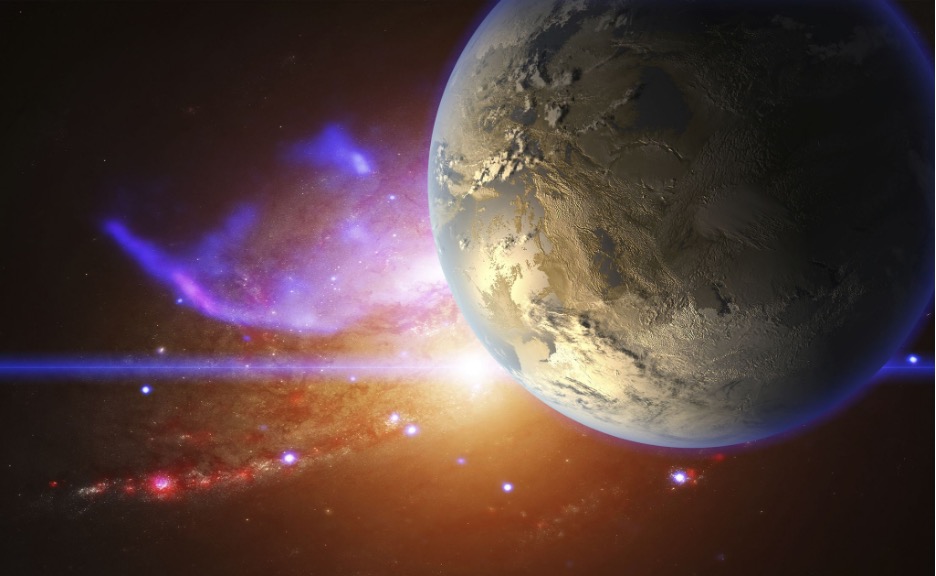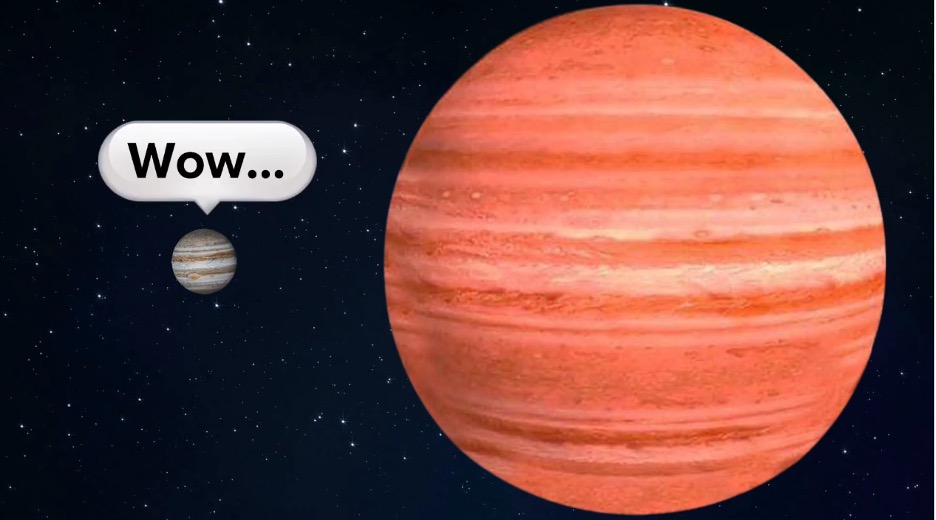Distant worlds: What is an exoplanet?
27th Mar 2023
Once the idea of stars being similar to our Sun became accepted, questions about the existence of worlds similar to ours arose. Indeed, if there are millions of stars in the Universe besides our Sun, most likely, they should also have their own planets. Observation has borne this out.
In this article, you will find out about exoplanets: what is an exoplanet? What are their numbers and types? What exoplanet is the biggest and closest to the Earth, and could we live there?
What is an exoplanet in simple terms?
The prefix “exo” comes from the Greek language and means “outside.” In other words, an exoplanet is any planet outside our solar system. That is why they are also called extrasolar planets.
What are the four types of exoplanets?
Exoplanets come in sizes ranging from gigantic ones, larger than Jupiter, to tiny ones like Mars or Mercury. They can be hot like Venus or icy like Neptune. Most of them revolve around one star, very close to it or far away, and some can revolve around two stars simultaneously. There are also rogue planets that are not attached to any star at all and revolve around their galactic centres. Based on these factors, researchers define the following exoplanet types.
Gas giant
A large planet like Jupiter, composed mostly of helium and/or hydrogen, has a hard core but no hard surface; instead, vortex gases predominate.
Neptunian
These exoplanets are similar in size to Neptune or Uranus. They usually have an atmosphere dominated by hydrogen and helium with cores of rocks and heavy metals.
Super-Earth
This type of planet is unlike any other in our solar system. They are twice the size and ten times more massive than Earth but lighter than ice giants like Neptune and Uranus. These exoplanets can be made of gas, rock, or a combination of the two.
Terrestrial
These are planets the size of the Earth and smaller, composed of rocks, silicates, water and/or carbon. This is the only group that is potentially habitable. Scientists think there may be as many as 10 billion terrestrial planets in our Milky Way galaxy, but there isn’t enough research yet to determine if any of them have atmospheres, oceans, or other signs of habitability.
Discovery of exoplanets
The first exoplanets were discovered in 1992 by Polish and Canadian astronomers Aleksander Wolszczan and Dale Frail. These were rocky worlds, four times the mass of the Earth, orbiting a dead star known as a millisecond pulsar, PSR B1257+12, or Lic for short (from the old English lic – dead / In modern fantasy, a necromancer magician). The scientists classified the objects as planets and named Draugr and Poltergeist. Two years later, the third planet in this system, Phoebetor, was discovered. It is believed that their formation resulted from two white dwarfs merging into a pulsar, thus forming a disk of matter in the star’s orbit.
Over the next 30 years, the existence of over 5,000 exoplanets has been confirmed, and almost 9,000 more are awaiting confirmation. Why haven’t we seen them before?
The fact is that detecting an exoplanet is quite difficult. They are located incredibly far from Earth. Do you know what exoplanet is closest to Earth? This is Proxima Centauri b in the constellation Centaurus, located at a distance of 4.2 light-years or 39,735,067,984,839.36 km!!!! But there are planets separated by tens and even hundreds of light years from us. Also, the planets do not emit their own light — they only reflect the light of stars, so they are much dimmer and harder to see. For a long time, we didn’t have the technology to find extrasolar planets. Only the invention of more advanced and powerful telescopes moved this matter forward.
How to find an exoplanet
To date, there are five main methods for detecting and studying exoplanets:
- radial velocity measurement;
- transit photometry;
- pulsar timing,
- microlensing,
- direct imaging.
We will not describe their methodology because it will take too long. You can learn about each method by clicking on the hyperlink. Let’s just say that none of these methods is universal; each has its own specifics. For example, the first exoplanets, Draugr and Poltergeist, were discovered using the pulsar timing method, but most others were discovered using transit photometry.
The following graph shows the number of extrasolar planet discoveries through the year 2021, with colours indicating the detection method.

Where exoplanets are studied in the UK
In the UK, exoplanets are studied in almost every scientific centre or university whose activities are related to space research. Let’s highlight the main ones:
- University of Birmingham;
- University College London UCL;
- School of Physics (University of Bristol);
- Centre for Exoplanets and Habitability (CEH) at the University of Warwick;
- Kavli Institute for Cosmology, Cambridge;
- Harwell campus space cluster in Oxfordshire.
In addition, in June 2022, the Ariel space telescope project was launched in the UK under ESA’s support. The consortium, which includes 17 countries, is led by University College London (UCL). Ariel is expected to study the atmospheres of over a thousand known exoplanets using transit photometry. The Ariel Consortium hopes to launch the telescope in 2029.
What is the biggest exoplanet in the Universe?

Today, this title belongs to the gas giant HD 100546 b, located in the constellation Musca. An object with a mass of 752 Jupiters and a radius of about 7 Jupiters is located at a distance of 330 light-years from Earth and 53.0 AU from its star (about 8 billion km).
However, HD 100546 b is not exactly an exoplanet. It is a brown dwarf, which is a cross between a planet and a star. Brown dwarfs are also called failed stars — they are much larger than typical planets but do not have enough mass to start the nuclear fusion of hydrogen in their cores, as stars do.
Among the outer objects of planetary mass, the largest of those discovered is ROXs 42B b — a companion of the binary star of spectral type M ROXs 42B in the constellation Ophiuchus. The planet is nine times more massive than Jupiter and, supposedly, three times larger in diameter. Scientists suggest that the atmosphere of ROXs 42B b probably has a lot of clouds and dust, and the surface temperature is about 2000K. The approximate distance of ROXs 42B b from Earth is 450 light years.
HD 100546 b and M ROXs 42B were discovered at approximately the same time (2013-2014), and so far, their record has not been broken, but perhaps the new JWST telescope will end this. Earlier in 2023 NASA announced that James Webb had discovered its first exoplanet.
Can we live on an exoplanet?
Of all exoplanet types, the terrestrial planets are considered hypothetically suitable for life. However, even when we have the technology to find an exoplanet to which we could migrate, we simply will not be able to reach it because of the very great distance. We are far from finding the way to make sure we can live on any particular exoplanet.






Thank you for your comment! It will be visible on the site after moderation.